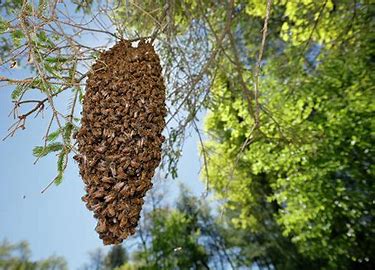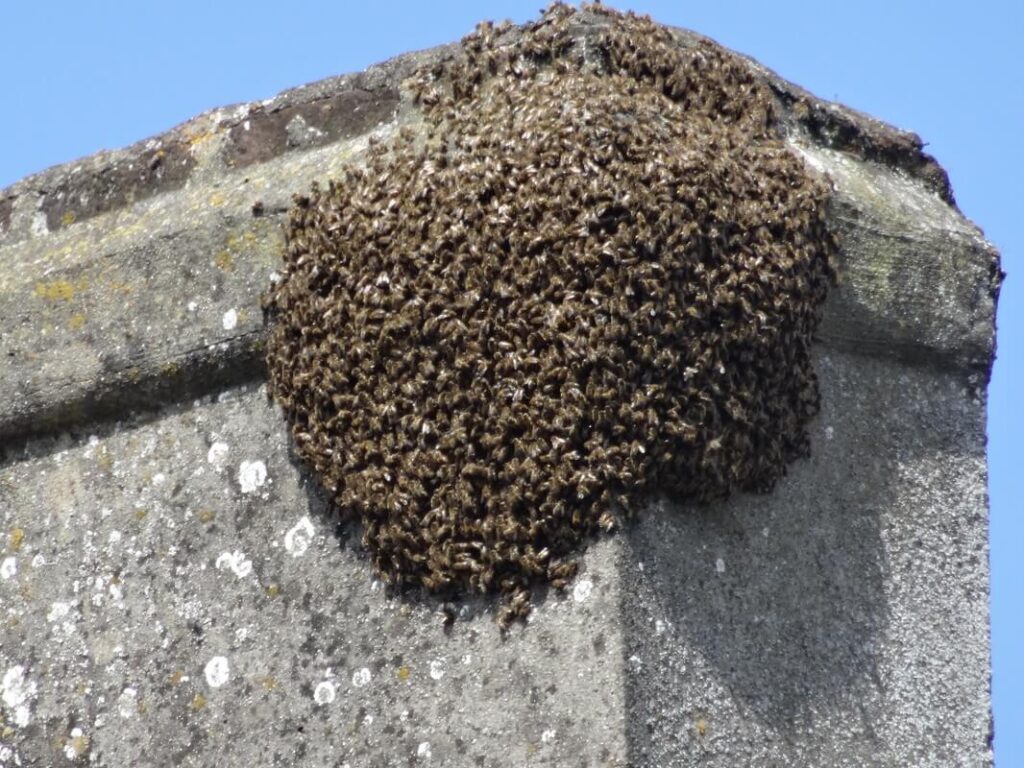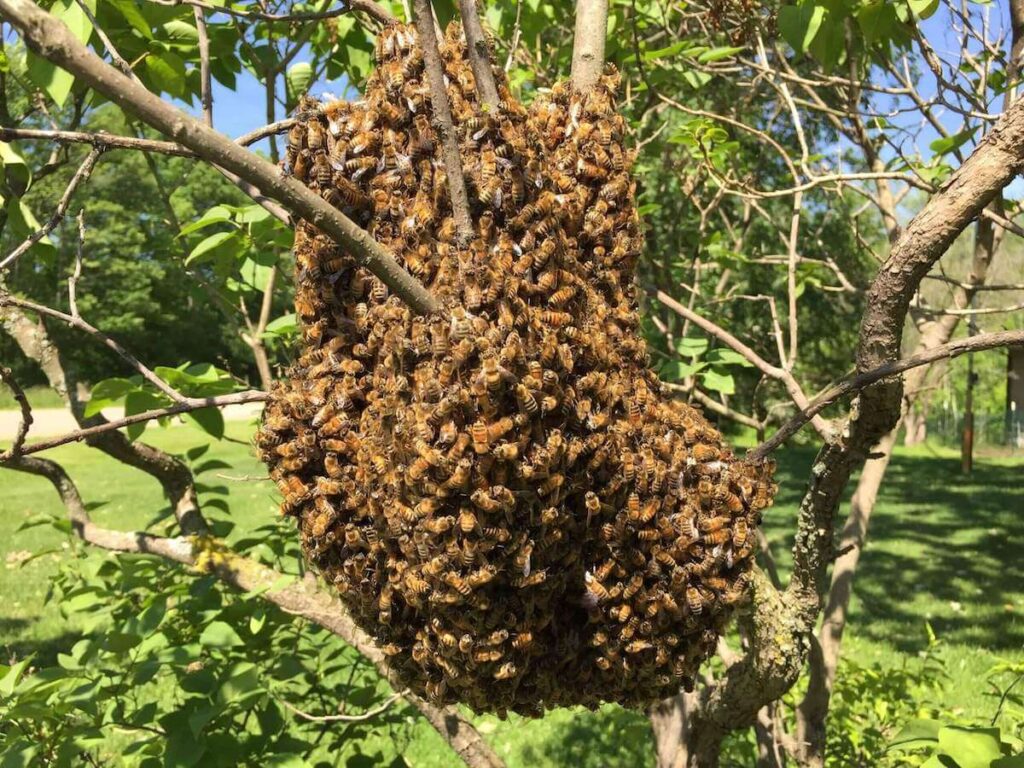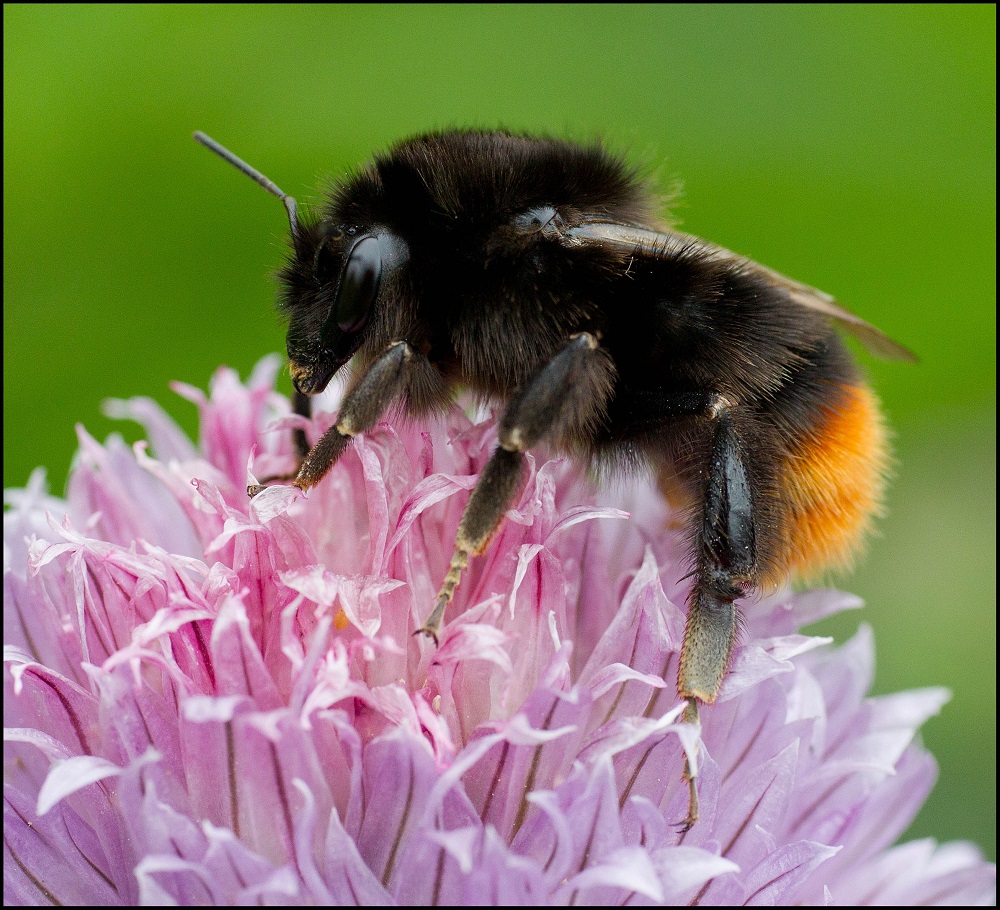

What to do if you have a swarm
- Stay at a safe distance.
- Ensure you have correctly identified that it is a swarm of honey bees.*
- Do not disturb, disperse, smoke or or in any way try to destroy the swarm. When in a swarm, honey bees are less likely to sting you.
- Contact a beekeeper using the map below.
* Most swarm collectors will ask for a clear photograph of the insects in question.
What is a swarm of honey bees?
A swarm is a natural process that honey bees undertake between about April and July. It is the first part of how a colony reproduces where the old queen leaves with about half the bees. They leave the original colony and find somewhere to cluster whilst the scout bees look for a place to set up a permanent home. This can take anything from a few hours to a couple of days.
This is the best time for a beekeeper to collect the swarm. If the bees are not collected, they may colonise a chimney, wall cavity or roof space which will require specialist equipment to extract.
Identifying a swarm
The honey bee is the only species of bee that swarms. Our volunteer beekeepers are only able to assist in cases of swarms of honey bees. We cannot help with removal of wasps nests and will not remove nests of any other species of bee. A honey bee swarm is typically about the same size of a rugby ball and will contain many thousands of bees. They will be located at any above-ground position – sometimes they will be just a few centimetres high or can be located at the top of very tall trees. If you see bees in the ground, it’s highly unlikely that these are honey bees.



We will not remove nests of any other species of bee. Please see the Bumblebee Conservation Trust for more information.
Other species of bees
There are around 250 species of bee in the UK. Of these, the only species that swarms is the honey bee. These bees will often nest in bird boxes, cracks in mortar or in the ground. These bees are important pollinators.



If you have bees nesting in your garden, please leave them alone. They are extremely unlikely to be aggressive towards humans and will die out towards the end of summer. Rather than being fearful of these wonderful insects, watch them, enjoy them and observe their behaviour. Moving these species of bee is likely to result in destruction of the nest.
Wasps and hornets
We can’t help with removing wasp and hornet nests
Like honey bees, wasps and hornets are social insects that have large nests. Nests may be in trees or in roofs of houses and sheds. Wasps have distinctive yellow and black bodies and will be attracted to sweet things. Hornets are larger and have a loud buzz.
The Asian hornet is an invasive species and a major threat to honey bees. If you believe you have found one, please report it via the Asian Hornet App available on Apple or Android or via the BBKA Asian Hornet team.



We can only help with honey bees, not any other species of bee, wasp or hornet.
But we can help identify Asian Hornets.
Find a swarm collector
To find your nearest swarm collector, use the map below. On the map that opens, enter your postcode and then click on the red markers which appear nearest the details of your local swarm collector. Please remember our beekeepers are volunteers and will have other commitments so may not be able to attend your request immediately.
